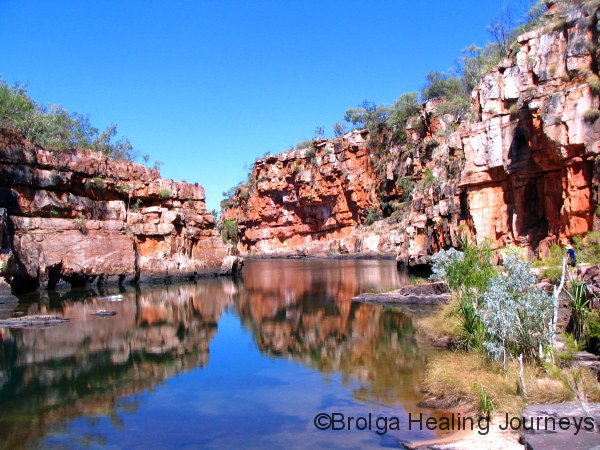The Kimberley

Is it possible to sum up the Kimberley in a few photographs? Of course not. Such a vast, untamed, ancient, uncompromising and varied landscape would take a lifetime to even begin to comprehend. But what the hell, here a a few photos we took in various places around the Kimberley, which we hope will give you a glimpse of the moods of this magnificent region. The Kimberley holds a magic all of its own.
We urge everyone to visit, but to tread lightly while you are there. The Kimberley is tough, but also surprisingly fragile. It contains many endangered plant and animal species, and many others found only in that region. The remoteness of the Kimberley, the extremes of its weather and the roughness of the roads and terrain have all helped to preserve it as one of the few remaining, true wilderness areas left on our planet. We can all help to keep it that way by taking steps to minimise our impact on the environment while we are there, such as taking all your rubbish with you when you leave, avoiding the use of chemicals and detergents near rivers and waterholes, and not swimming after you have put sunscreen or insect repellent on your skin, as these will foul the Kimberley’s crystal clear waterways. These are simple but effective steps.
We worry about the Kimberley’s future. Visitor numbers to the region increase every year, and we understand why, but each of us who visits has an inevitable impact upon the environment. We hope that all future tourism development is done in an ecologically sustainable way. While we bounced and crunched our way across the rough Kimberley roads we dreamed of the day when the roads would be sealed, but knew full well that such a move, while increasing our personal comfort, would lead to an explosion in visitor numbers. How long would the pristine, completely unpolluted gorges and rivers last under the strain of so many people?
The Kimberley also holds resource riches which, again because if its remoteness and lack of transport infrastruture, have remained largely unexploited. But now we hear of proposed gas developments off the Kimberley coast and accompanying ports onshore, and mining companies just itching to venture inland. All this for a region that we still only partially understand. We have absolutely no doubt that there remain many species undiscovered within the Kimberely, but when the big money of the mining industry starts to talk, surely the quiet voices of these reclusive Kimberley lifeforms will have little chance to be heard.



















